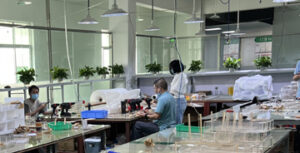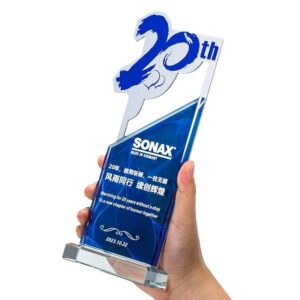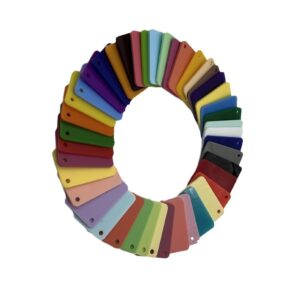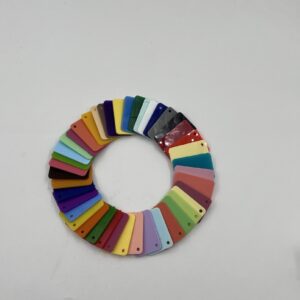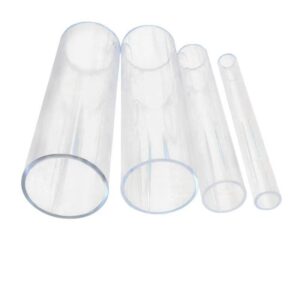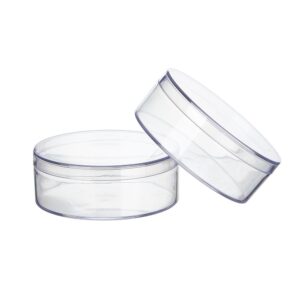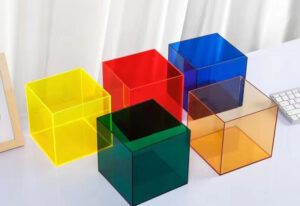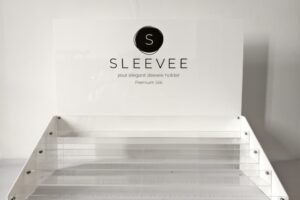Summary
LED Illuminated Acrylic Display Ideas That Wow Crowds showcases a variety of creative display solutions that combine acrylic materials with LED technology to produce visually impressive and interactive presentations. These displays are becoming more common in retail, exhibitions, and events because they can capture attention, improve brand visibility, and increase sales. They use advanced lighting techniques and customization options, enabling businesses to adjust displays to fit their specific branding needs and audience preferences.
The use of dynamic and interactive displays has transformed traditional marketing by letting brands engage customers through immersive experiences. Features like touch-sensitive screens, motion detection, and various lighting effects create an engaging shopping environment that not only shows off products but also tells compelling brand stories. Integrating LED technology improves the visual appeal of acrylic displays, making them versatile for different uses, from retail showcases to trade show booths, where they can significantly increase foot traffic and consumer interaction.
A notable controversy surrounding these displays is related to sustainability and energy use. While LEDs are more energy-efficient than traditional lighting, some concerns exist about the life cycle impact of these products, including their manufacturing and waste management. However, the move toward energy-efficient displays supports broader corporate social responsibility goals, encouraging many businesses to adopt more eco-friendly practices.
Overall, LED illuminated acrylic displays represent a dynamic combination of technology, design, and consumer engagement, constantly evolving to meet the demands of modern marketing while improving the shopping experience across various industries.
Table of Contents
Types of LED Illuminated Acrylic Displays
Dynamic Displays
Dynamic displays use LED technology to create visually captivating presentations that grab attention. These displays can animate product features, showcasing details that might otherwise be missed, and act as storytelling tools that connect with audiences by highlighting a product’s history or innovation journey. This interactive element changes traditional marketing, letting brands engage customers with real-life product demonstrations and seasonal promotions.
Pedestal LED Display Cases
The Pedestal LED Display Case is a great example of innovation in acrylic display design. With a 360° showcasing capability, these cases allow products to be viewed from all angles, improving the customer experience by enabling exploration and interaction. Such displays are designed to support various content formats, offering educational and entertaining value through dynamic visuals that appeal to multiple senses.
Backlit Graphics and Signage
Backlit graphics and illuminated signage have become essential tools in retail and exhibition settings. They can be customized to match corporate colors or programmed for variable color displays, creating a visually engaging environment. These LED-enhanced designs offer flexibility in messaging and can adapt to different campaigns, ensuring that promotional content remains relevant and eye-catching.
Custom Exhibit Design
Custom exhibit designs that include LED technology allow for unique branding experiences. By using LED lights for halo-lit logos, accent lights, and backlit graphics, designers can create a cohesive and attractive booth space that stands out at trade shows and exhibitions. These custom solutions not only improve aesthetic appeal but also boost brand visibility and customer engagement, increasing foot traffic and sales.
Interactive Displays
Interactive LED displays take customer engagement to the next level. They can include features like touch-sensitive screens and motion detection, allowing customers to browse products, select options, and experience augmented reality applications. This level of interaction makes shopping more enjoyable and memorable, increasing customer participation and driving sales through personalized experiences.

Design Ideas
Innovative Use of Lighting
Integrating LED lighting into acrylic displays can significantly enhance their visual impact. Lighting not only highlights the products but also creates an inviting atmosphere that attracts customers. Retailers can use overhead, uplighting, and downlighting to influence how merchandise is seen, encouraging consumers to engage with the displays longer and increasing the likelihood of a purchase. By using bright, contrasting colors for the products against a clear acrylic background, retailers can effectively draw attention to key items, making them stand out.
Customization and Aesthetics
Custom acrylic displays provide businesses with an opportunity to tailor their marketing efforts to their brand’s identity. Manufacturers often provide a variety of customization options, including unique shapes, sizes, colors, and finishes, enabling retailers to create displays that align perfectly with their specific branding needs. The use of Radiant Iridescent Acrylic Sheets, which change color depending on the viewer’s angle, can further improve the display’s aesthetics, creating a multi-sensory experience that captivates customers.
Engaging Graphics and Information
Incorporating engaging graphics and informative elements into acrylic displays can further educate consumers and improve their shopping experience. Retailers can use graphics to tell their brand’s story or highlight product features, effectively using every part of the display case. Interactive components, such as touchscreens or QR codes, can also be included to collect customer feedback or provide more product information, fostering a deeper connection between the consumer and the brand.
Thematic Color Coordination
When designing acrylic displays for specific exhibitions or seasonal promotions, it’s essential to consider the overall theme and color palette. Tailoring colors to fit the exhibition theme can create a cohesive and immersive experience for the audience. For instance, using complementary colors can improve the visual appeal of the display, making it more inviting and engaging. Prototyping and testing different color combinations will help in understanding how they interact with the acrylic and lighting, ensuring the final design meets creative expectations.
Practical Display Solutions
Beyond aesthetics, functional considerations are also essential in display design. Acrylic displays can be designed to maximize space efficiency while ensuring easy access for customers. This can include modular designs that allow for reconfiguration based on seasonal product lines or promotions. The versatility of acrylic makes it an ideal material for creating practical yet striking displays that meet various merchandising needs.

Technology Behind LED Illuminated Acrylic Displays
Overview of LED Technology
LED (Light Emitting Diode) technology has become vital to the design and function of illuminated acrylic displays. These displays benefit from several advantages, including energy efficiency, longer lifespan, and reduced heat output compared to traditional lighting solutions. The use of LEDs allows for dynamic visual effects that can improve product visibility and customer engagement in retail environments.
Components of LED Displays
LED Modules
At the heart of LED illuminated displays are LED modules, which are made up of multiple LED beads, circuit boards, power supplies, and control chips. The quality of the LED beads is critical, as it directly impacts the display’s overall performance. Control chips manage the brightness and color output of each LED, ensuring uniform and appealing light emission.
Driver Circuits
Driver circuits are essential for providing stable current and voltage to the LED beads. This component includes features such as power management, brightness adjustment, grayscale control, and scanning control, all of which contribute to accurate image rendering on the display.
Auxiliary Structures
LED displays also incorporate auxiliary structures that enhance color performance, offering a broader color range and more accurate reproduction. This ensures that images and videos presented on the display are vibrant and realistic, meeting the high demands of modern advertising and commercial applications.
Environmental Benefits
The move toward LED technology in illuminated displays aligns with sustainability goals. LEDs are up to 80% more energy-efficient than traditional lighting, significantly reducing energy costs and environmental footprints. Their long lifespans also minimize waste and energy consumption over time, making them an eco-friendly option for businesses looking to improve their operational practices.
Creative Applications
The versatility of LED illumination allows for innovative design possibilities in acrylic displays. Color-changing LEDs can create captivating visual effects, while the strategic use of tinted acrylic sheets and textured lighting can enhance the overall aesthetic appeal. This adaptability not only boosts foot traffic but also distinguishes products in a competitive marketplace, enhancing brand identity and customer interaction.
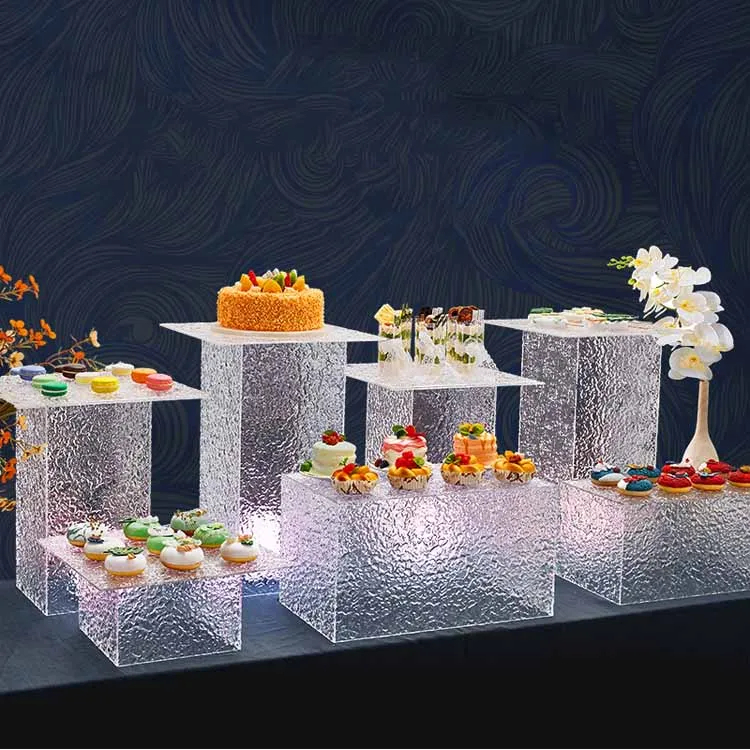
Installation and Maintenance
Installation Considerations
Proper installation of LED illuminated acrylic displays is crucial for their effectiveness and longevity. The process involves several key steps to ensure optimal performance and aesthetic appeal.
Site Preparation
Start by evaluating the location for the best visibility and alignment. Factors like height, visibility from different angles, and potential obstacles should be considered. Mark the positions where each acrylic letter or display will be mounted to ensure even spacing and alignment according to the design.
Mounting Options
Choose the right mounting method based on personal preference and the building structure. Options include flush mount, raceway mount, or individual mounting. Before finalizing the installation, test the illumination of each letter to confirm that all LED lights are working correctly.
Electrical Connections
Address any electrical issues immediately if flickering lights or sections that are not lighting up are observed. This may involve checking wiring connections or replacing malfunctioning LED modules to maintain display performance.
Maintenance Best Practices
Routine maintenance is essential for preserving the appearance and functionality of LED illuminated acrylic displays.
Regular Cleaning
Perform regular cleaning using mild, non-abrasive solutions and a soft cloth to avoid damaging the acrylic surfaces. Harsh chemicals and high-pressure washing should be avoided as they can compromise the material’s integrity and appearance.
Routine Inspections
Conduct regular visual inspections to check for signs of wear, damage, discoloration, or malfunctioning lights. Early detection of issues allows for timely repairs, preventing more extensive damage and extending the life of the display.
Professional Maintenance
Scheduled professional inspections can assess the overall condition of the acrylic displays. Professionals can identify potential issues and perform necessary preventive maintenance. In cases where displays show signs of aging or wear, professional refurbishing services can restore their original brilliance, which may involve polishing or applying a new iridescent coating.
Weather Protection
For outdoor installations, ensure that exposed edges of the acrylic are adequately sealed to prevent water from getting in. Using weather-resistant materials such as silicone sealant and corrosion-resistant hardware during installation enhances durability against various weather conditions.
By following these installation and maintenance practices, LED illuminated acrylic displays can effectively capture attention while ensuring longevity and optimal performance.
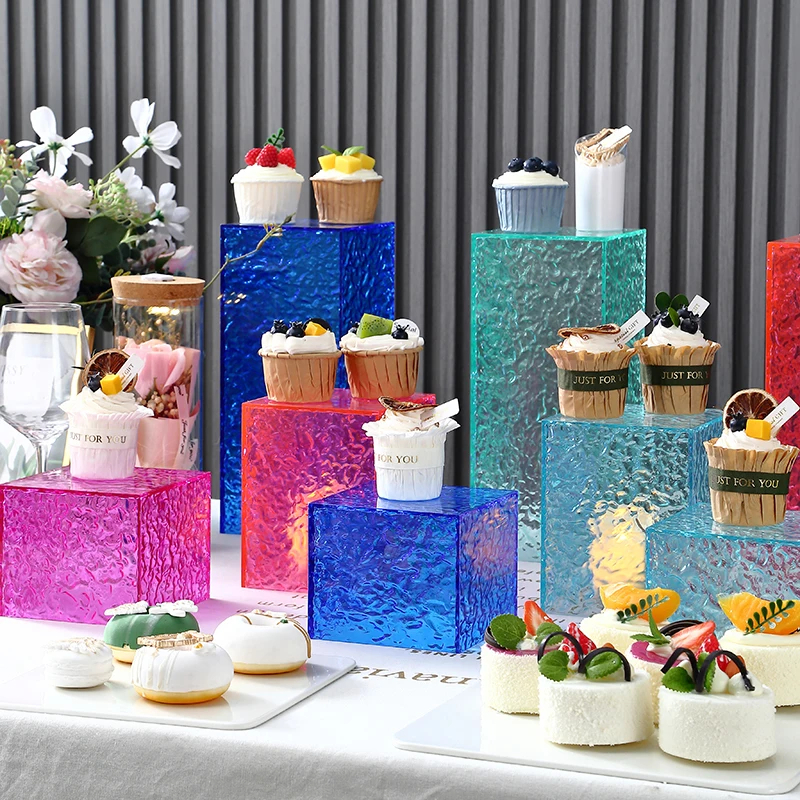
Case Studies
Retail Success Stories
Several retailers have successfully implemented LED illuminated acrylic displays, leading to notable increases in sales and customer engagement. For instance, a fashion retailer that installed interactive mirrors with LED technology in their fitting rooms saw a 20% boost in sales. This innovative setup allowed customers to request different sizes and browse complementary products, creating a more engaging shopping experience and encouraging social media sharing. Similarly, a Fredericksburg gift shop used LED wall cases to improve the presentation of decor items, which led to a 15% increase in sales. The bright, welcoming glow from the LED lights helped to attract customers’ attention and improved the overall shopping atmosphere.
Event and Expo Innovations
LED displays have also transformed the way businesses present themselves at events and trade shows. For example, companies have adopted interactive LED displays in their expo booths, which provide high-resolution video presentations and interactive product catalogs. This technology has proven effective in attracting visitors and encouraging them to engage with the brand’s offerings, significantly increasing foot traffic and interest in their products. One notable example involved a tech company that integrated interactive LED screens into their booth, allowing attendees to interact with the displayed products through touch and movement. This strategy not only captured the attention of passersby but also fostered a deeper connection with the brand, resulting in a surge of inquiries and potential sales leads.
Educational Enhancements
Schools and educational institutions have started to use LED technology to create immersive learning environments. An example is a university that installed interactive LED displays in common areas, showcasing upcoming events and artist portfolios. This not only enhanced the aesthetic of the space but also fostered a sense of community engagement, encouraging students to participate in events and activities.
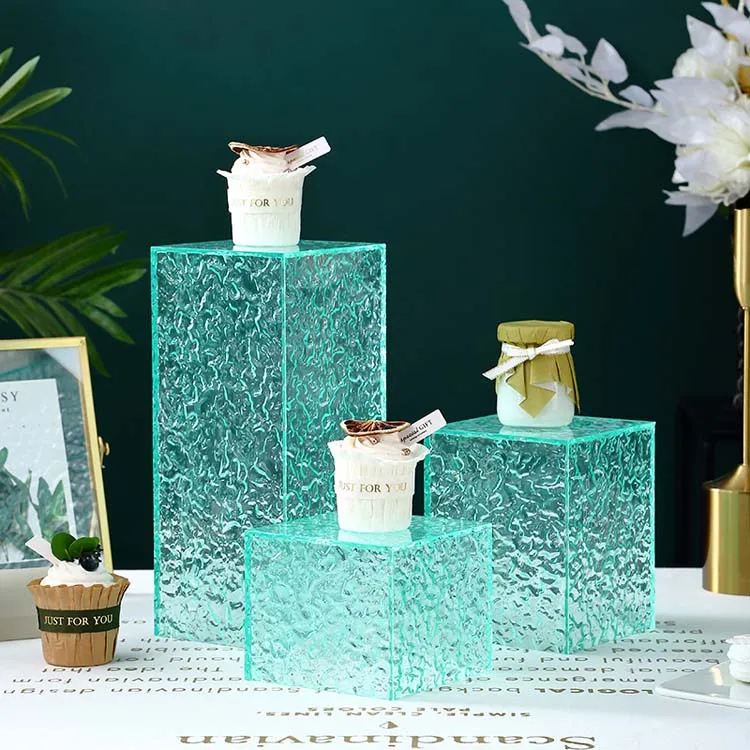
Future Trends
As the demand for innovative and visually captivating displays continues to grow, the future of LED illuminated acrylic displays is poised for exciting advancements. The integration of LED technology into acrylic signage and displays promises to enhance aesthetic appeal and operational efficiency, revolutionizing how brands engage with their audiences.
Technological Innovations
One of the key trends shaping the future of LED displays is ongoing technological evolution. Innovations in LED technology are expected to produce screens that are not only brighter and more energy-efficient but also capable of delivering high-quality images and videos. This is particularly significant as the LED display market is projected to grow at a rate exceeding 10% annually, leading to increased investment from businesses looking to maximize their advertising reach and impact. As technology progresses, indoor LED advertising will likely become even more prominent, particularly in high-traffic areas where capturing attention is essential.
Interactive Engagement
Another trend gaining traction is the rise of interactive LED displays. These advanced screens go beyond traditional digital signage, allowing audiences to engage directly with content through touch screens, motion sensors, and other interactive features. For example, in retail environments, customers can access product information, compare prices, or even experience virtual try-ons, significantly enhancing customer engagement and driving sales. This interactive approach not only attracts foot traffic but also creates memorable experiences that foster deeper connections between brands and consumers.
Environmental Sustainability
Sustainability remains a critical focus, with LED displays offering eco-friendly advantages. Their energy efficiency and long lifespan contribute to reduced power consumption and lower carbon emissions, aligning with modern sustainability goals. As companies increasingly prioritize environmentally responsible practices, the adoption of LED technology in acrylic displays will likely expand, further solidifying their role in promoting sustainable business strategies.
Versatility and Adaptability
The versatility of LED illuminated acrylic displays is set to increase, with designs that allow for seamless integration of graphics and thematic elements tailored to specific branding needs. Additionally, advancements in software will enable dynamic content updates, allowing brands to easily adapt displays for seasonal campaigns or special promotions. This flexibility ensures that displays remain relevant and engaging, catering to changing consumer preferences and market trends.


